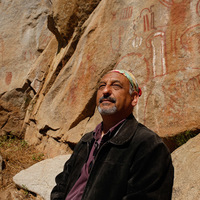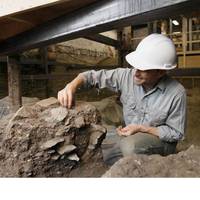
John Eddy
Related Authors
Kaitlin Brown
California State University, Northridge
Alan Garfinkel
California State University, Bakersfield
José Antonio Linares-Catela
Universidad Complutense de Madrid
Katherine I. (Karen) Wright
University College London
Adrian L. Burke
Université de Montréal
Claude Chapdelaine
Université de Montréal
InterestsView All (30)








Uploads
Papers by John Eddy
competitive networks of interaction during the Middle to Late Holocene. Retracing the life histories of chlorite schist artifacts from archaeological deposition to lithic source origin may unveil intricacies of prehistoric politics, economics, and social dynamics not presently apparent in the archaeological record.
This paper examines the Santa Cruz Island Chlorite Schist source and its role in stone bead and ornament industries during the Middle to Late Holocene, and reports on the preliminary results of southern California chlorite schist and soapstone/steatite LA-ICP-TOFMS chemical composition analysis."
Thesis by John Eddy
Islands, San Gabriel and San Bernardino Mountains, lower Mojave River, and Coachella Valley. By the Late period the stone bead exchange network, which had previously operated parallel to the Santa Barbara Channel shell bead exchange network, was absorbed by it.
"
competitive networks of interaction during the Middle to Late Holocene. Retracing the life histories of chlorite schist artifacts from archaeological deposition to lithic source origin may unveil intricacies of prehistoric politics, economics, and social dynamics not presently apparent in the archaeological record.
This paper examines the Santa Cruz Island Chlorite Schist source and its role in stone bead and ornament industries during the Middle to Late Holocene, and reports on the preliminary results of southern California chlorite schist and soapstone/steatite LA-ICP-TOFMS chemical composition analysis."
Islands, San Gabriel and San Bernardino Mountains, lower Mojave River, and Coachella Valley. By the Late period the stone bead exchange network, which had previously operated parallel to the Santa Barbara Channel shell bead exchange network, was absorbed by it.
"